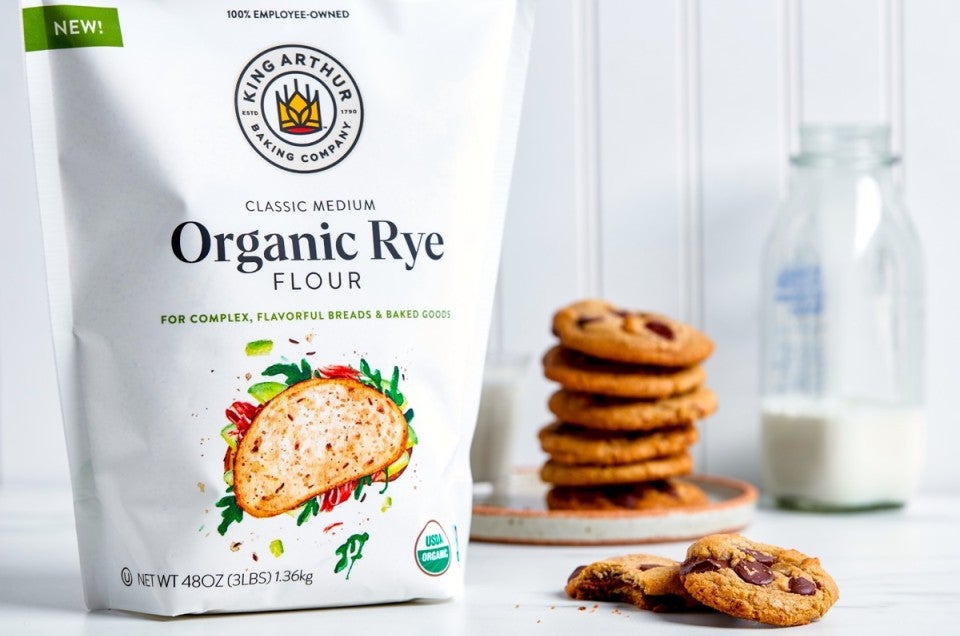


Over the next few weeks, we're celebrating rye flour and all the baking possibilities it offers, from complex flavor to surprising versatility. Join us each week as we explore just why you should be baking with rye.
For most of us, all-purpose flour is the mainstay of our baking. From sandwich bread to lemon cake, sugar cookies to pie crust, this wheat-based flour is the one we reach for most often.
Still, all-purpose isn’t the only flour available out there, and wheat isn’t the only grain. Meet our new Organic Medium Rye Flour — with its numerous baking-friendly attributes, we’re sure it’ll earn a place in many bakers’ pantries going forward.
Our test kitchen has been experimenting with this delightful flour for months now and has come up with some great new recipes formulated specifically for medium rye flour: from Rye Chocolate Chip Cookies and Brown Butter Rye Shortbread to — get this — Savory Rye Pancakes!
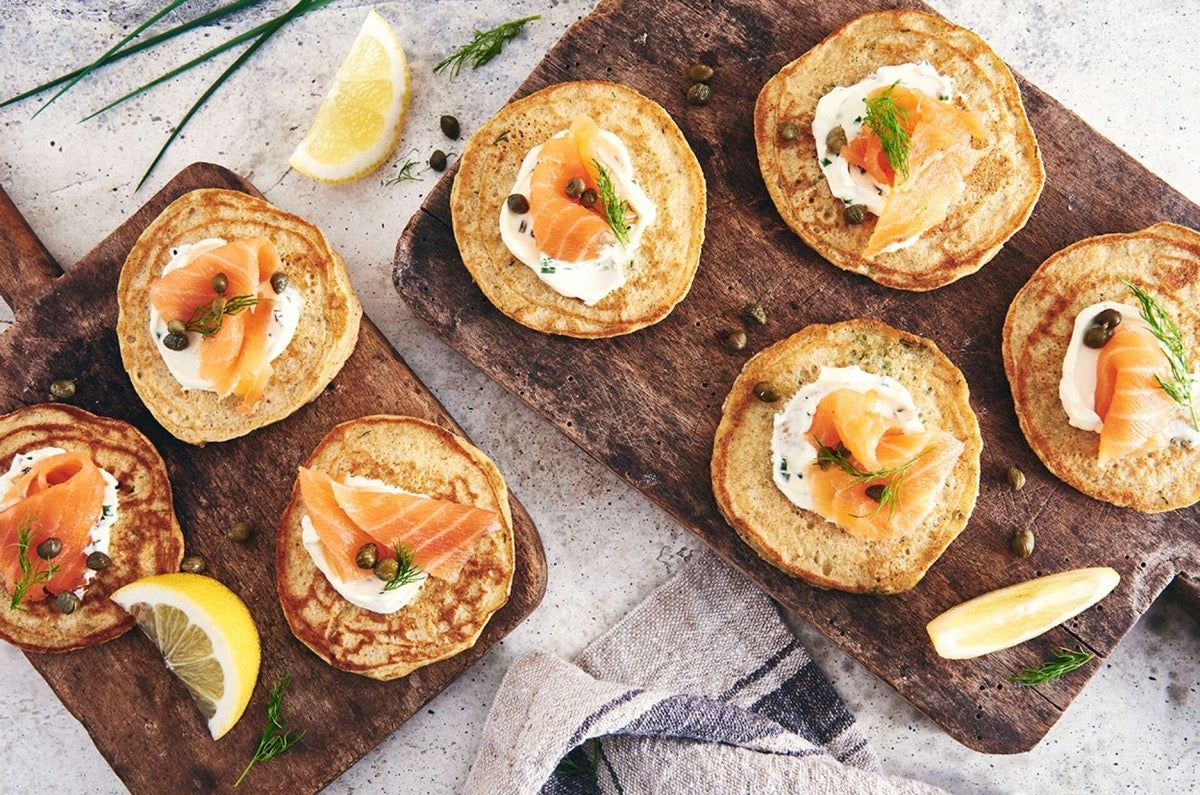
Who knew rye could be so interesting? Not me, initially, but I was inspired. I wanted to see what other baking possibilities it offered beyond just specific rye recipes. After doing a wide range of experiments substituting Organic Medium Rye Flour in some of my favorite recipes, I’ve discovered it can add warm color, mild nutty flavor, and a touch of toothsome texture to just about any cookie, cake, muffin, quick bread, or breakfast bread you can name.
Rye and wheat are two very different grains, and each reacts a bit differently in baking. Here are some key differences to understand before you begin:
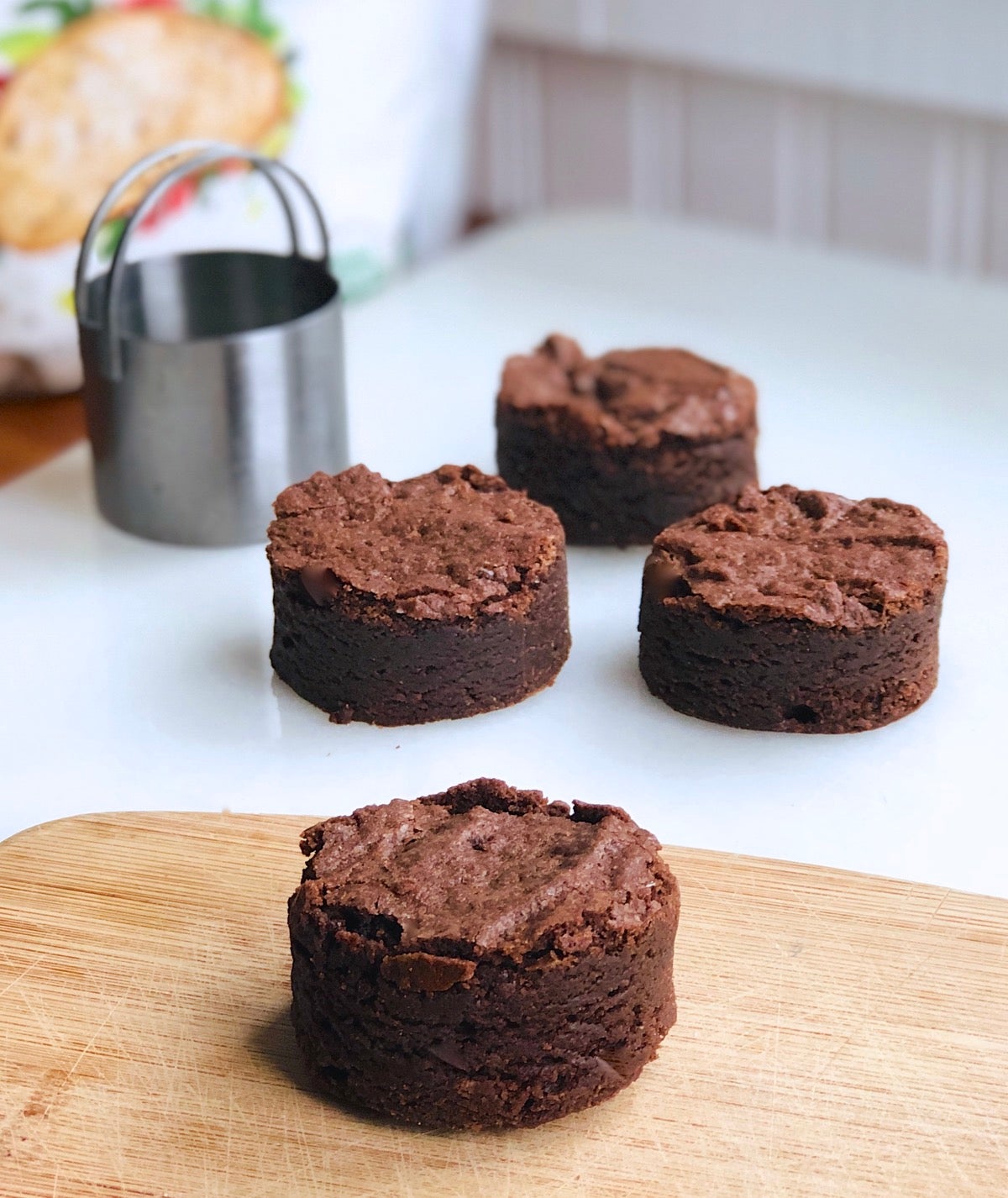
First, decide where it makes sense to add rye. Do you really want to alter the creamy color and hauntingly elusive flavor of your Vanilla Cake Pan Cake? Probably not; vanilla is a notoriously difficult flavor to carry off. But are you ready to add rye to plain Baking Powder Biscuits for a touch deeper color and heartier taste? Sure, why not?
Which isn’t to say you should try rye only in simple recipes without a lot of competing flavors. As mentioned earlier, rye is an enhancer for many strong-flavored ingredients. Your brownies, molasses cookies, and cinnamon snickerdoodles will taste even better with the addition of rye flour.
There are several different rye flours to bake with, and when it comes to substituting for all-purpose, which one you choose matters. Finely milled, relatively light in color, and with mild but distinct flavor, medium rye flour strikes a happy balance between the neutrality of white rye flour and the heartiness of whole-grain pumpernickel, making it a great choice to swap in for all-purpose flour in recipes.
The more rye flour you substitute for all-purpose flour, the more apparent its effects will be. For each baked good you consider, determine whether rye’s grain-y flavor and hint of bran will be an enhancer — or at higher levels, maybe a touch out of place.
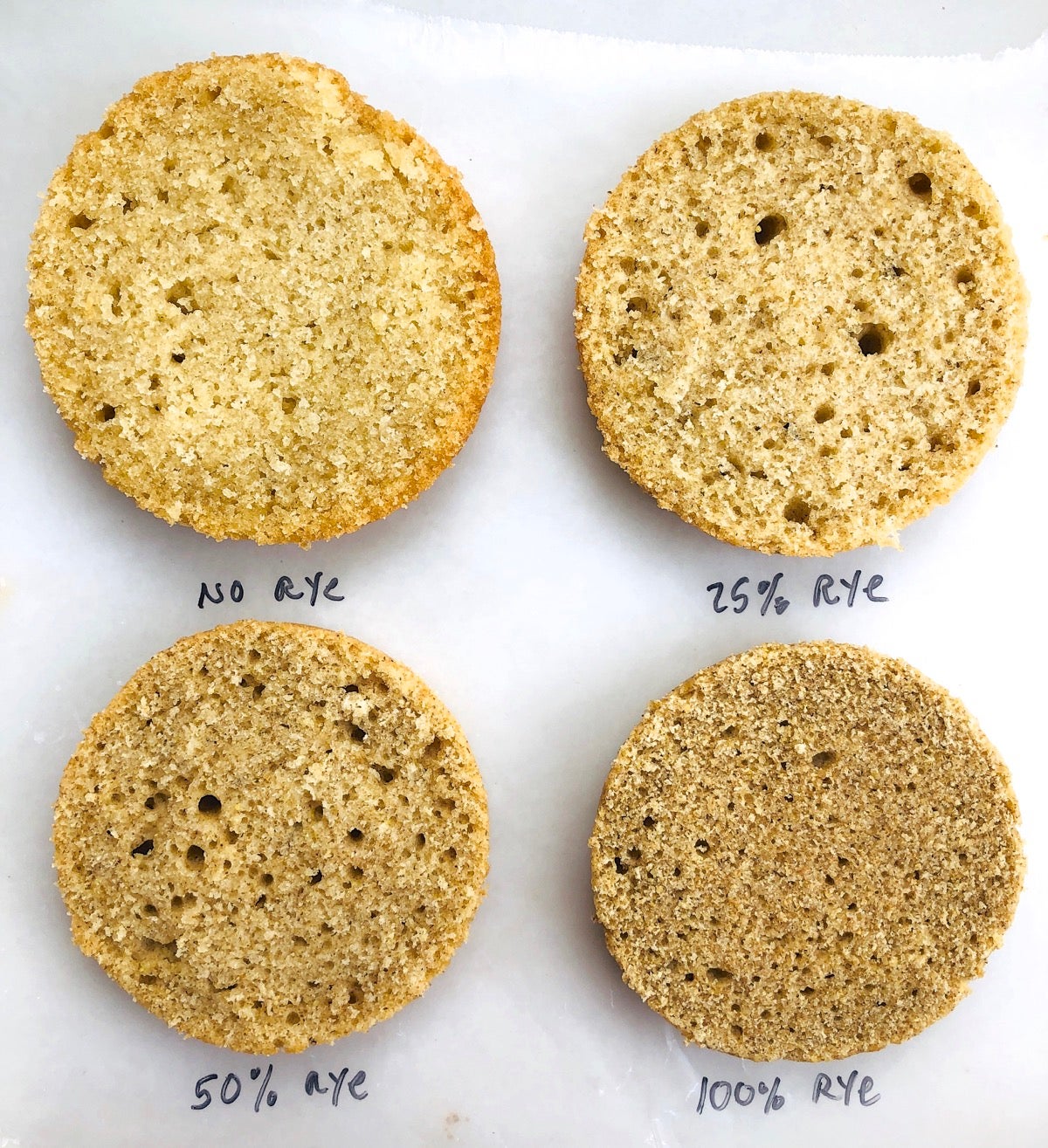
I discovered that substituting Organic Medium Rye Flour for 25% of the all-purpose flour in my recipes (by weight) yields baked goods with only subtle changes: slightly darker color apparent in light-colored baked goods; a mere hint of rye flavor; perhaps a little graininess in the mouthfeel.
If you try this minor substitution and enjoy it, increase the amount of rye you use next time. The more rye you add, the more noticeable its effects on color, flavor, and texture.
As you work up to 50% or more rye, use your judgment: are further changes welcome? For instance, the flavor of my 100% rye flour Quick and Easy Fudge Brownies seems more complex than usual, with the rye playing beautifully against the dark chocolate backdrop. But my 100% rye Simply Perfect Pancakes? At that level rye becomes dominant, with the pancakes’ signature fried flavor impacted and their mild butteriness lost.
When you’re first learning to substitute medium rye flour for all-purpose flour, 25% is a great place to start.
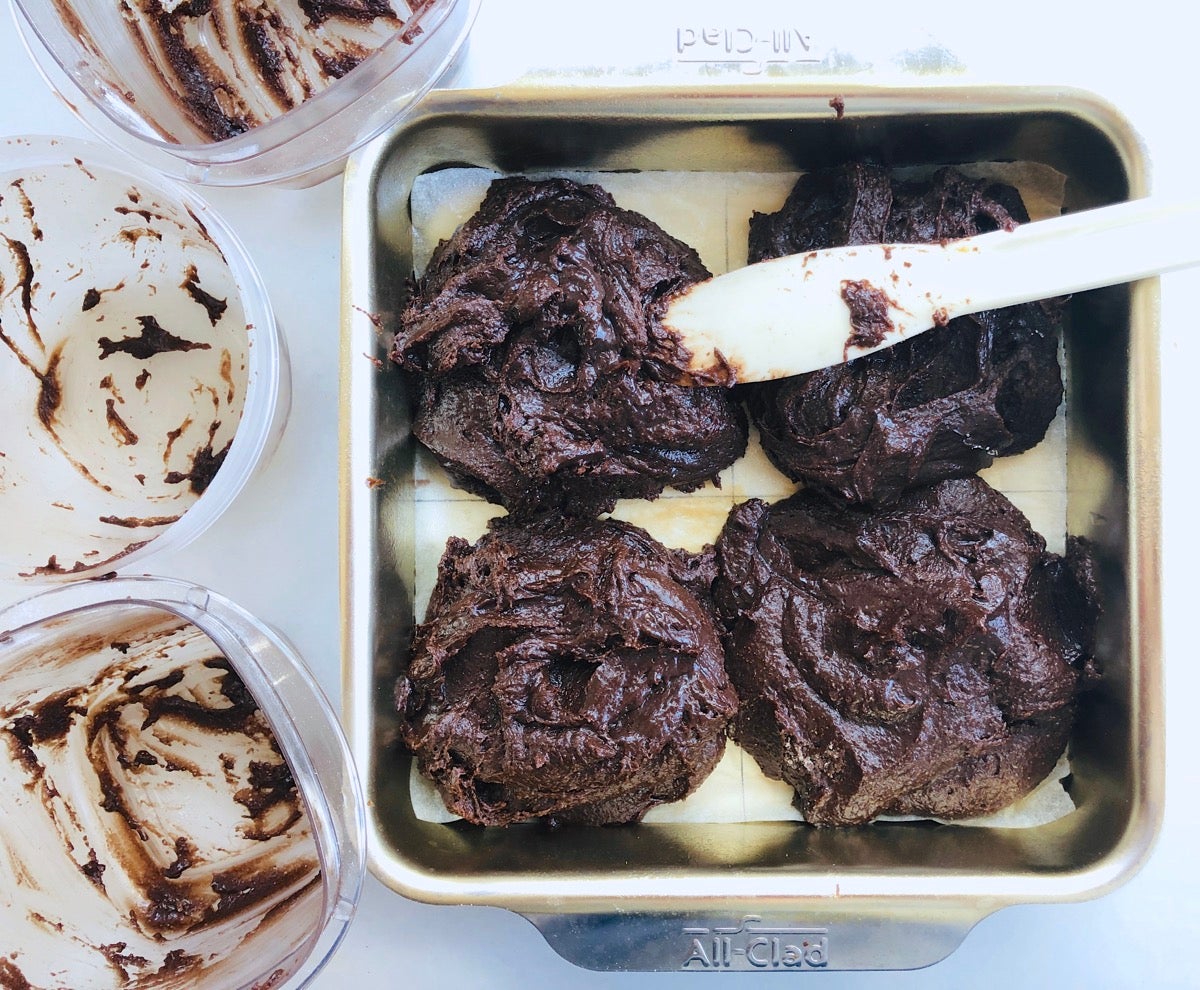
In order to give our medium rye flour a good workout, I tested it in 10 recipes: Chocolate Chip Cookies, Gingersnaps, Doughnut Muffins, Whole-Grain Banana Bread, Simply Perfect Pancakes, Baking Powder Biscuits, Quick and Easy Fudge Brownies, Vanilla Cake Pan Cake, Golden Focaccia, and Sourdough Crackers.
For each recipe I tested substituting 25% rye, 50% rye, and 100% rye. Remember, this is by weight. To substitute by volume, start with this: 1 cup all-purpose flour is approximately equivalent to 1 cup + 2 tablespoons medium rye flour.
For selected recipes, I added one more test: 125% rye (i.e., I used 25% more rye flour than the amount of all-purpose flour called for). More about that later.
Here’s what I learned.
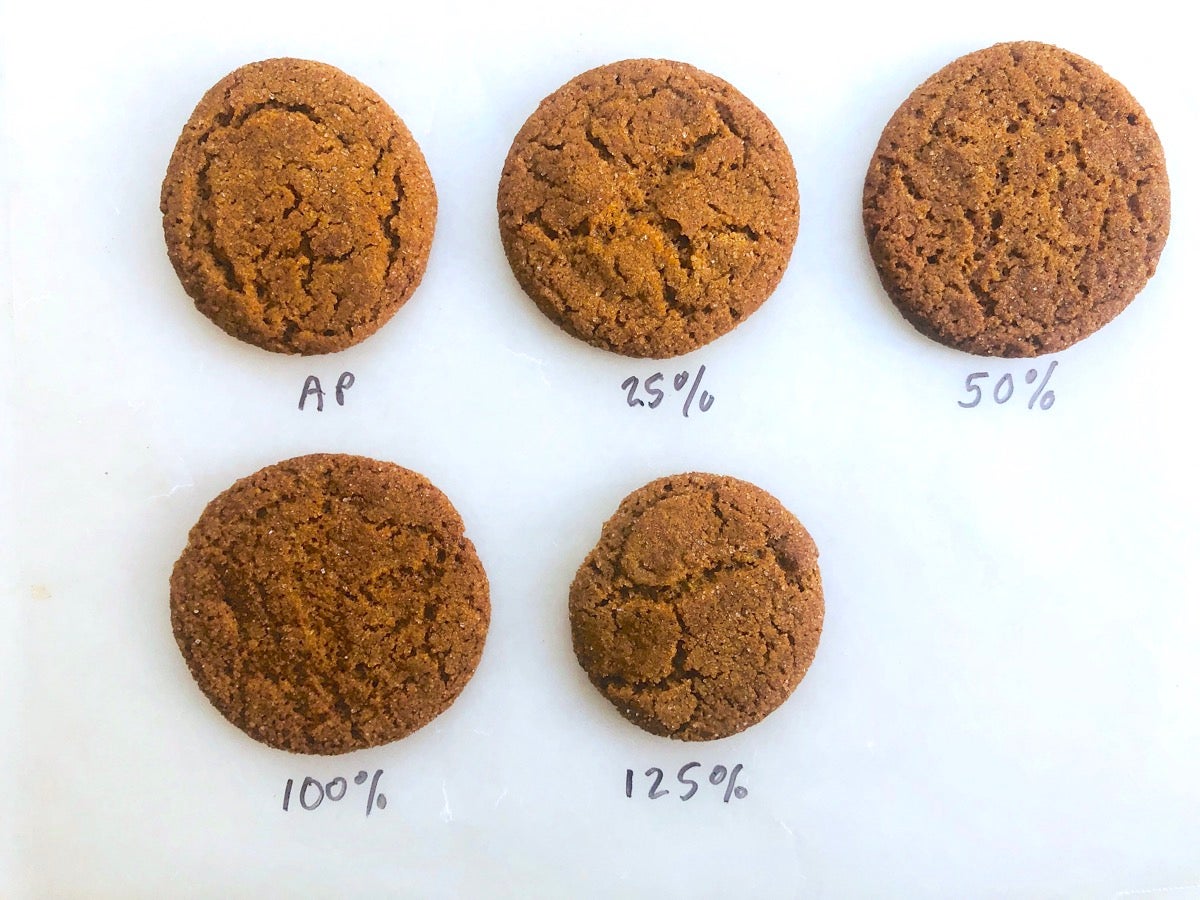
The greater percentage of rye flour you substitute in drop cookies, the darker they’ll look and the more they’ll spread compared to the all-purpose version. Why is this? Remember, rye is very low in gluten, and it also absorbs liquid differently than wheat. And since both gluten and liquid impact cookie structure, these changes translate to cookies that spread.
In most cases, especially when subbing rye at lower levels, this extra spread is very slight and isn’t an issue. But if you want rye cookies whose spread is as close as possible to their original version, substitute 125% rye by weight: use 150g rye flour (generous 1 1/3 cups) for every 120g (1 cup) all-purpose flour called for. The sheer extra volume of flour helps control rye cookies' spread.
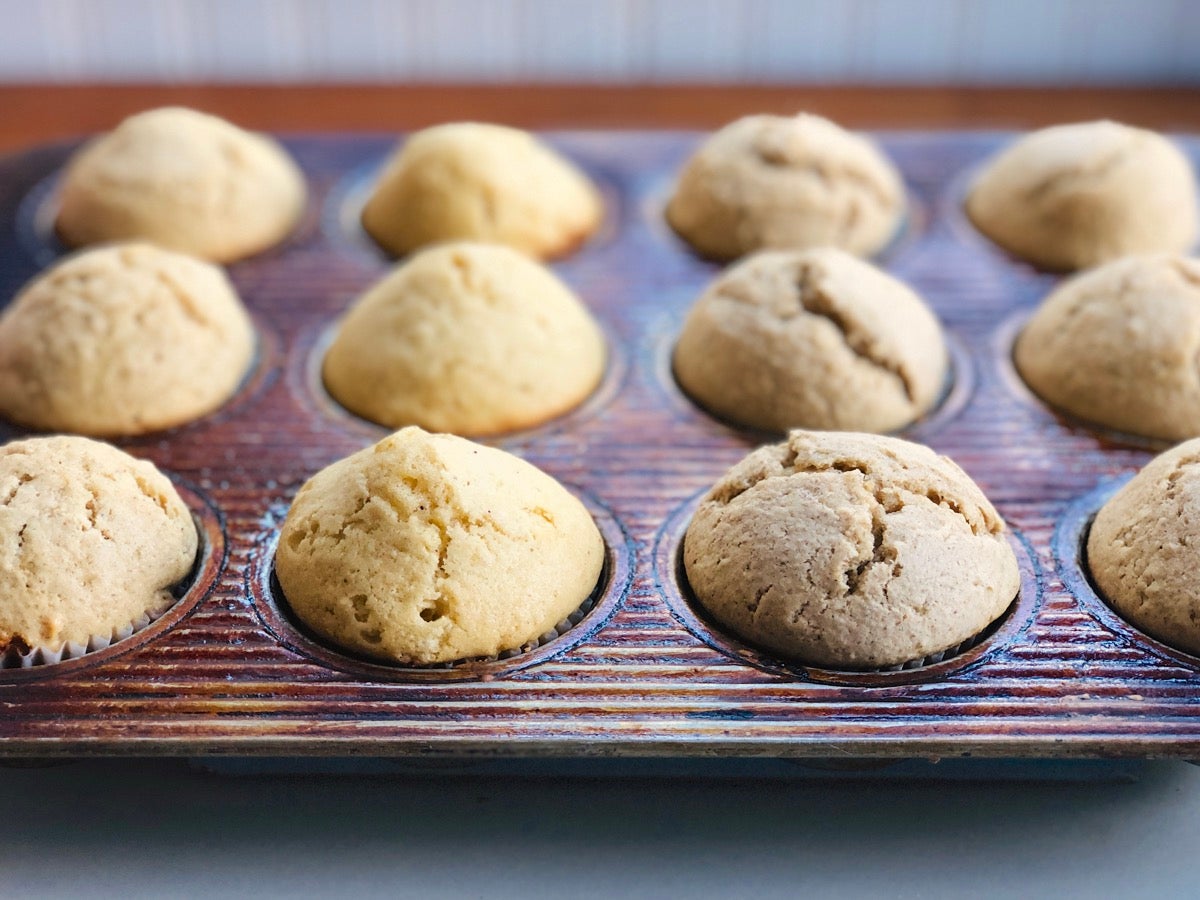
I expected the Doughnut Muffins I baked with 100% rye flour to be lower-rising and somewhat more dense than those made with all-purpose. Surprise — all of the iterations, from 25% rye to 100% rye, rose just fine. Apparently the relatively short distance 100% rye muffins rise (compared to yeast bread), and the support they have in the pan, enables them to do well despite their relative lack of gluten.
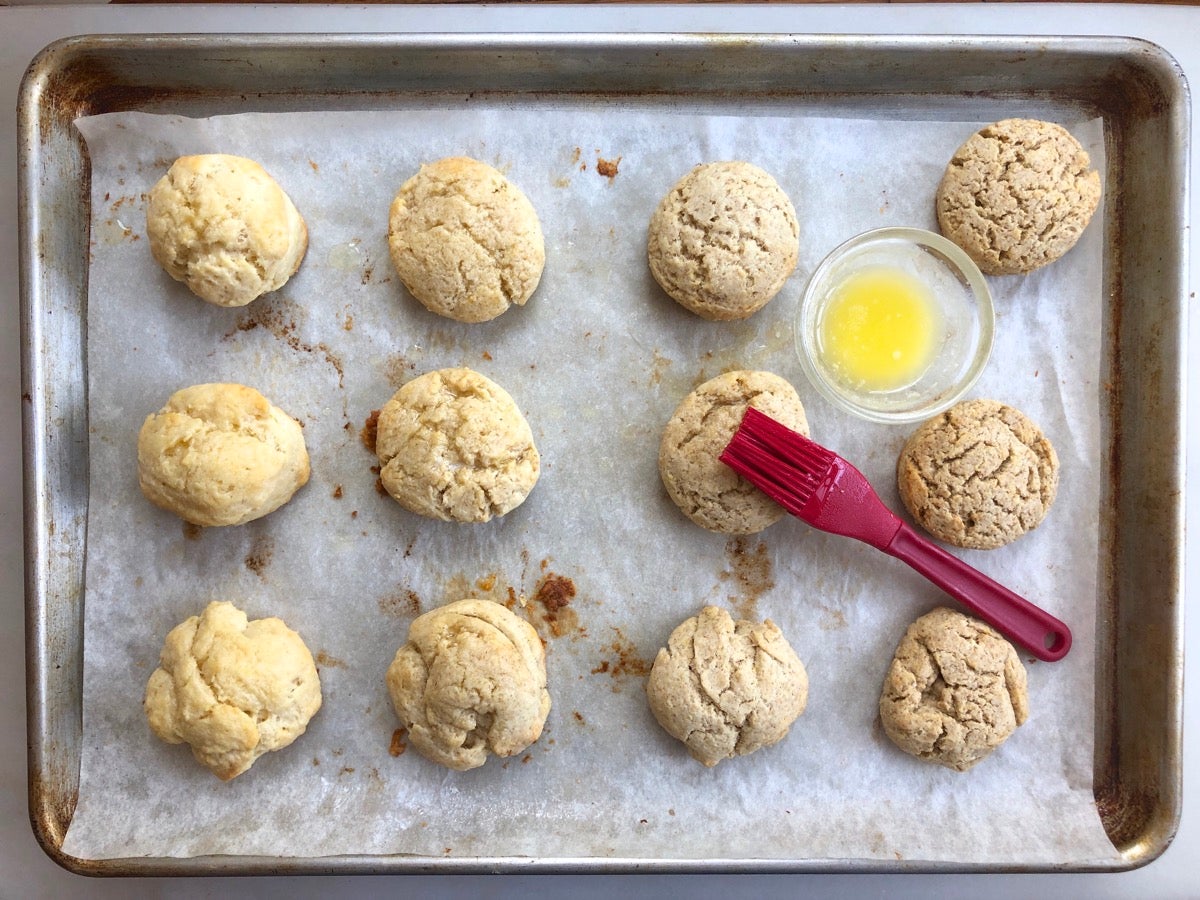
Baking powder biscuits can tend to be a little flat-tasting. Think about it: when you eat a hot buttered biscuit, you’re mostly enjoying the flavor of butter, right? Substitute any amount of rye to yield biscuits with heartier, bolder flavor.
Biscuits made with all-purpose flour rise 50% higher than those made with 25% or 50% rye; and rise twice as high as biscuits made with 100% rye flour. But my audience actually prefers the rye biscuits, claiming their flavor makes up for their relative lack of height.
Oh, by the way: since a scone is basically just a gussied-up biscuit, feel free to apply this information to scones as well. Brown Butter Rye Scones? Oh yeah.
How can you improve on the flavor of fudge brownies? That deep-dark chocolate deliciousness … Frankly, I wasn’t expecting rye to do anything for brownies, but when substituted 100% it adds a subtle complexity to their flavor.
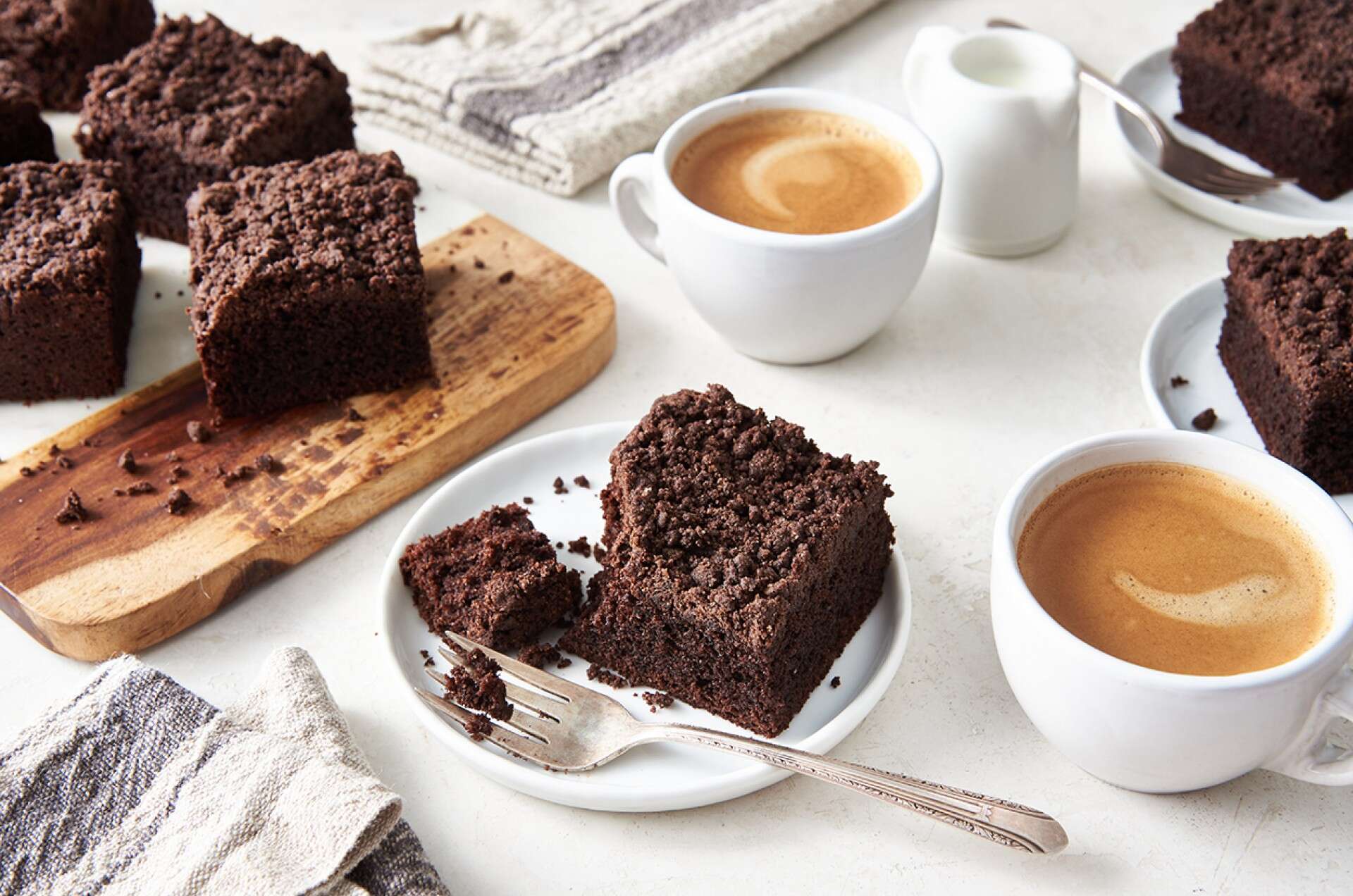
I believe this is why our Rye Chocolate Chip Cookies and Rye Chocolate Coffeecake are both winners as well; rye complements chocolate beautifully.
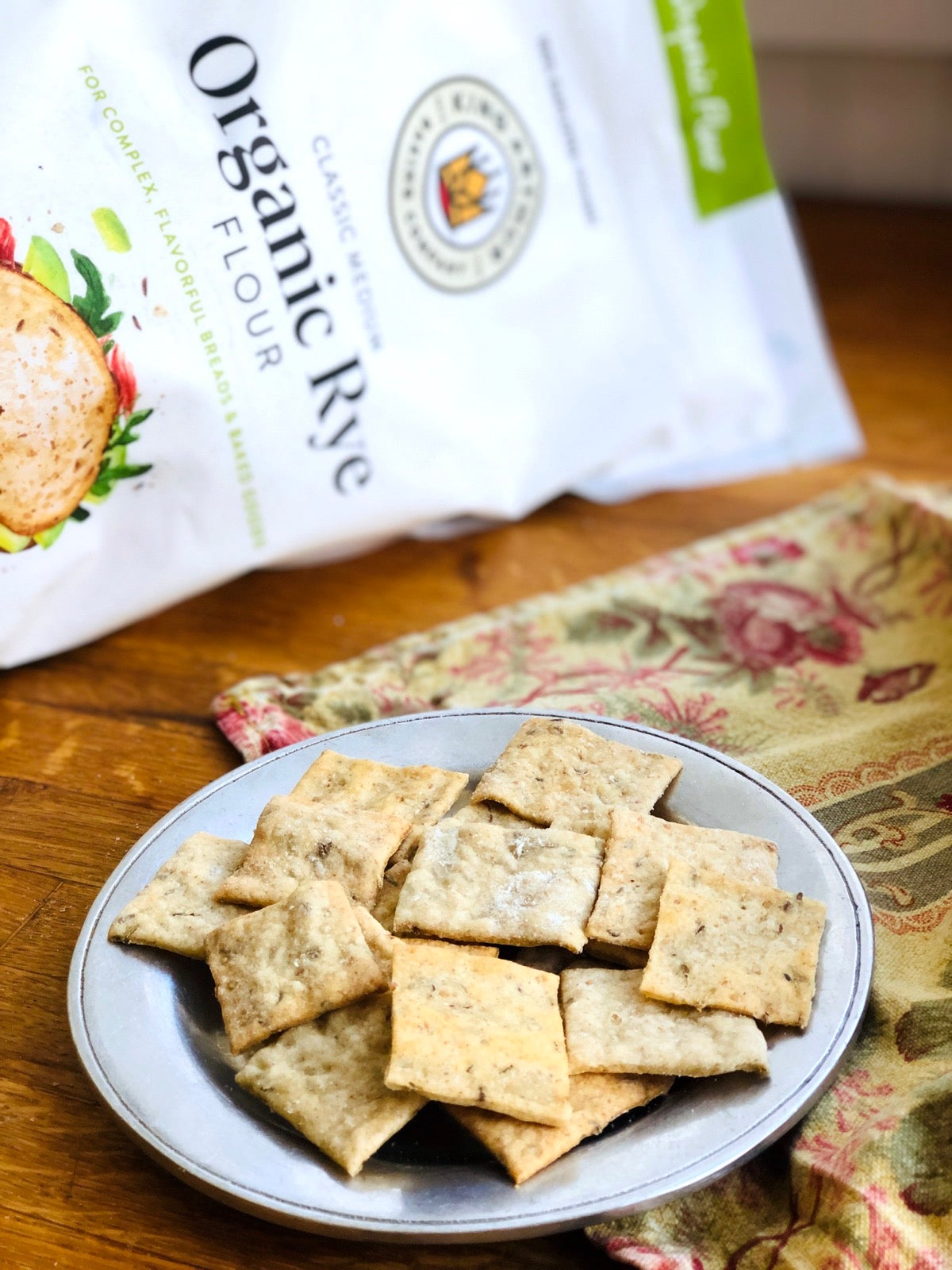
All sorts of recipes calling for sourdough discard are good candidates for rye flour. Sourdough is another one of those assertive flavors that rye complements beautifully.
Sourdough Crackers in particular are the perfect blank palette for all kinds of bold flavors, from sharp cheese to black pepper to smoked paprika. Start building flavor by making cracker dough using up to 100% rye flour in place of the all-purpose called for in the recipe. Tangy and grain-y and full-flavored, Sourdough Crackers made with rye flour (and topped with smoked salt) are my new best friend at the appetizer table.
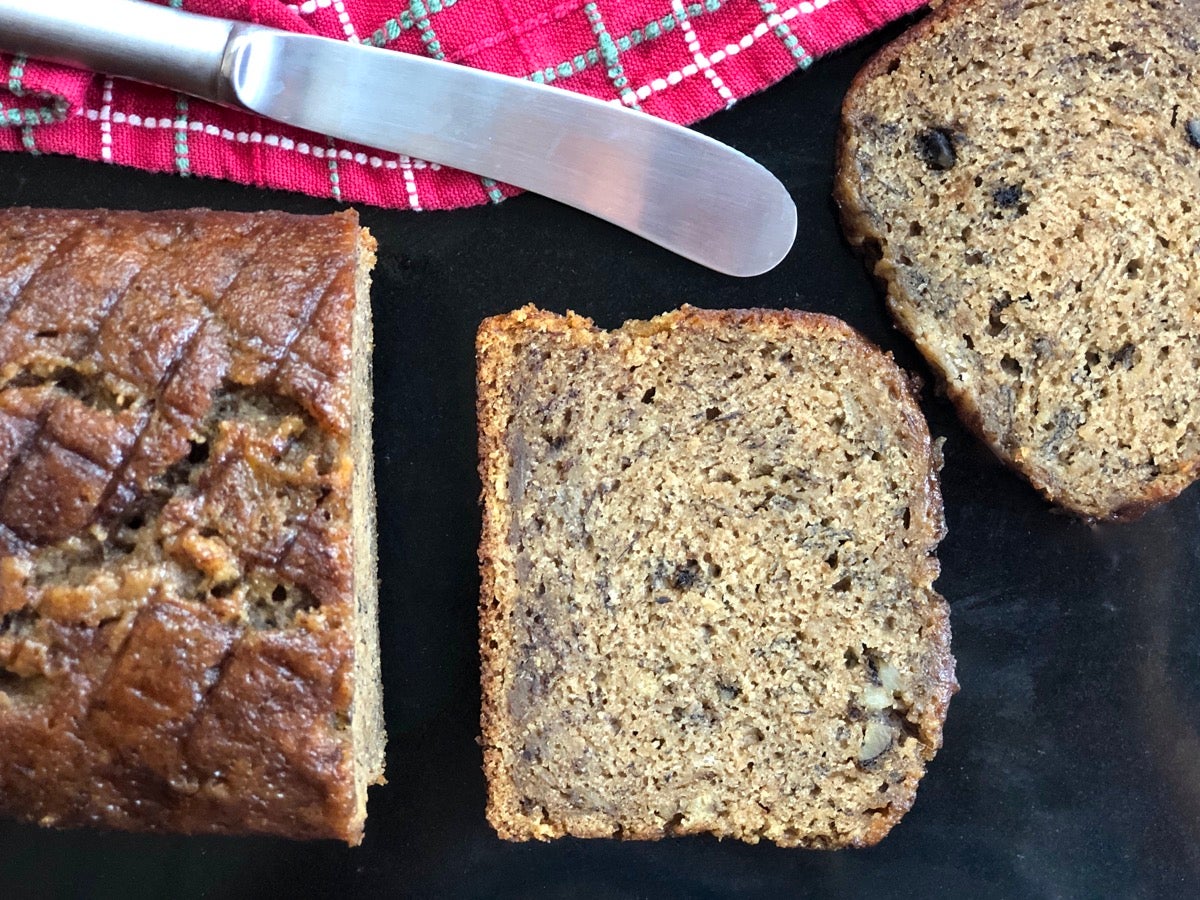
Got a favorite recipe (beyond yeast bread) that calls for some whole wheat flour along with the white flour? Try substituting medium rye flour for 50% of the whole wheat in the recipe.
I did this in our Whole-Grain Banana Bread, using 1/2 cup (53g) medium rye flour and 1/2 cup (57g) golden whole wheat flour in place of the 1 cup white wheat called for. The result? No difference in flavor that I could detect, but it’s simply another way to enjoy rye flour — and reduce your gluten consumption a bit.
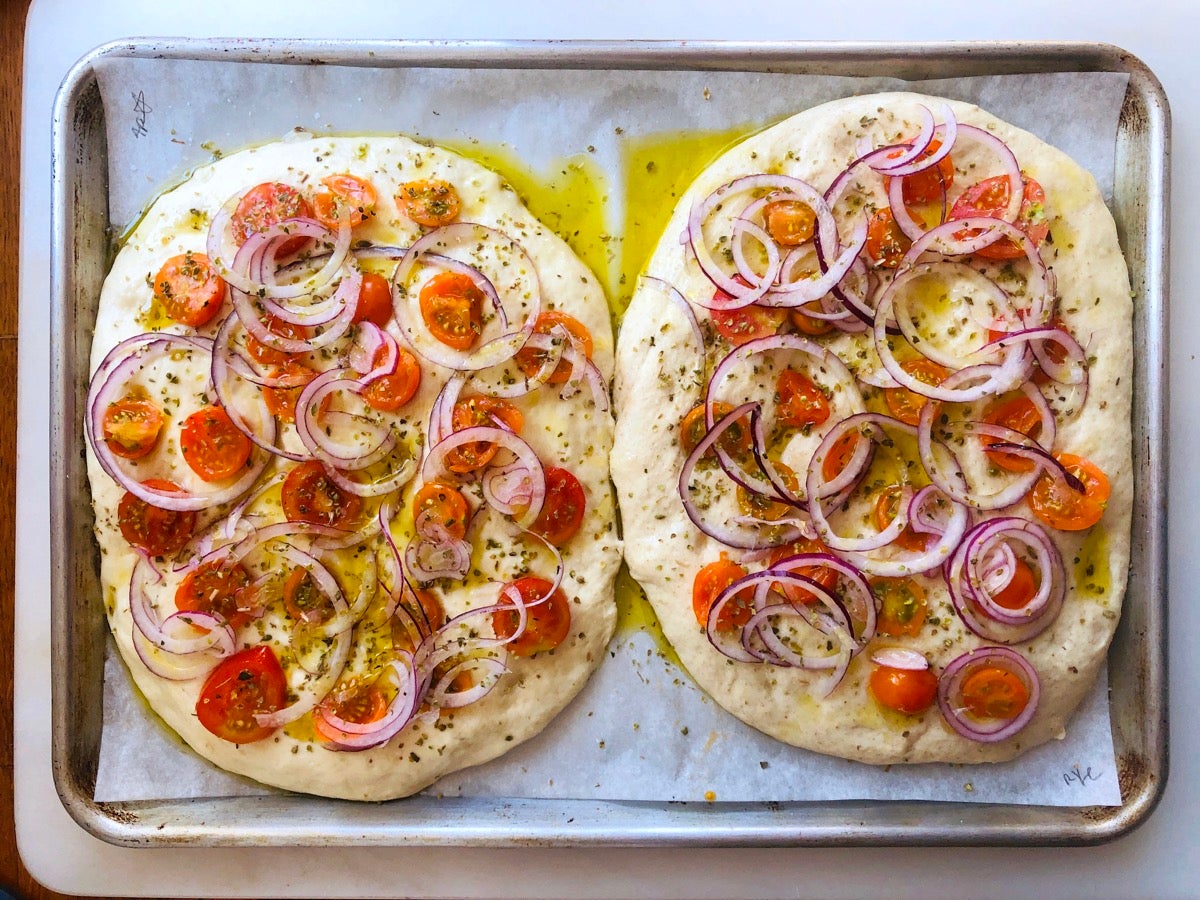
There are so many delicious rye bread recipes out there, it’s hard to believe you’d want to cobble together one of your own via substitution. With gluten playing such a vital role in yeast bread's structure, substituting rye at too high a percentage can lead to lower-rising, dense breads.
Still, if you want to use rye in your favorite yeast bread recipe, start small: replace 25% of the all-purpose or bread flour with rye and assess the results. If you're pleased, try a bit higher percentage next time.
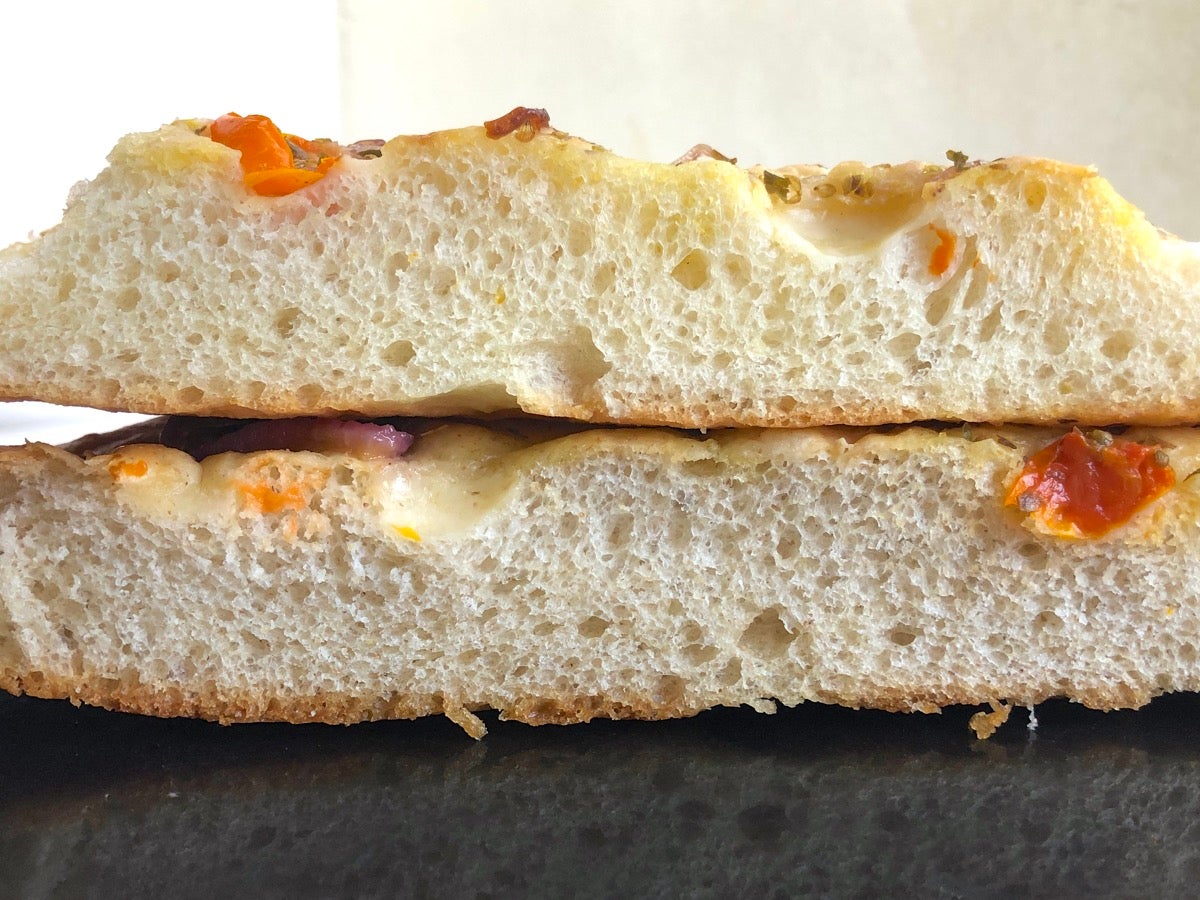
Since they don’t have to rise as high (thus rye’s lack of gluten isn’t a key factor), your best results will probably come with flatbreads or pizza crust. I tested 25% rye in our recipe for Golden Focaccia and was very pleased with the results. At this level, rye adds color and a bit of flavor to the bread without affecting its rise.
Since the bread was going to feel slightly more rustic, I decided to top it with red onions, homegrown tomatoes, sea salt, coarse pepper, and a generous splash of olive oil. Good choice.
Our test kitchen has developed a whole roster of new recipes designed to take advantage of medium rye's unique characteristics; you'll find them on our recipe site.
But if you’re eager to tinker with some of your own personal favorite recipes, go for it: you may find your mom’s special chocolate chip cookies are even better when rye steps in for some or all of the white flour!
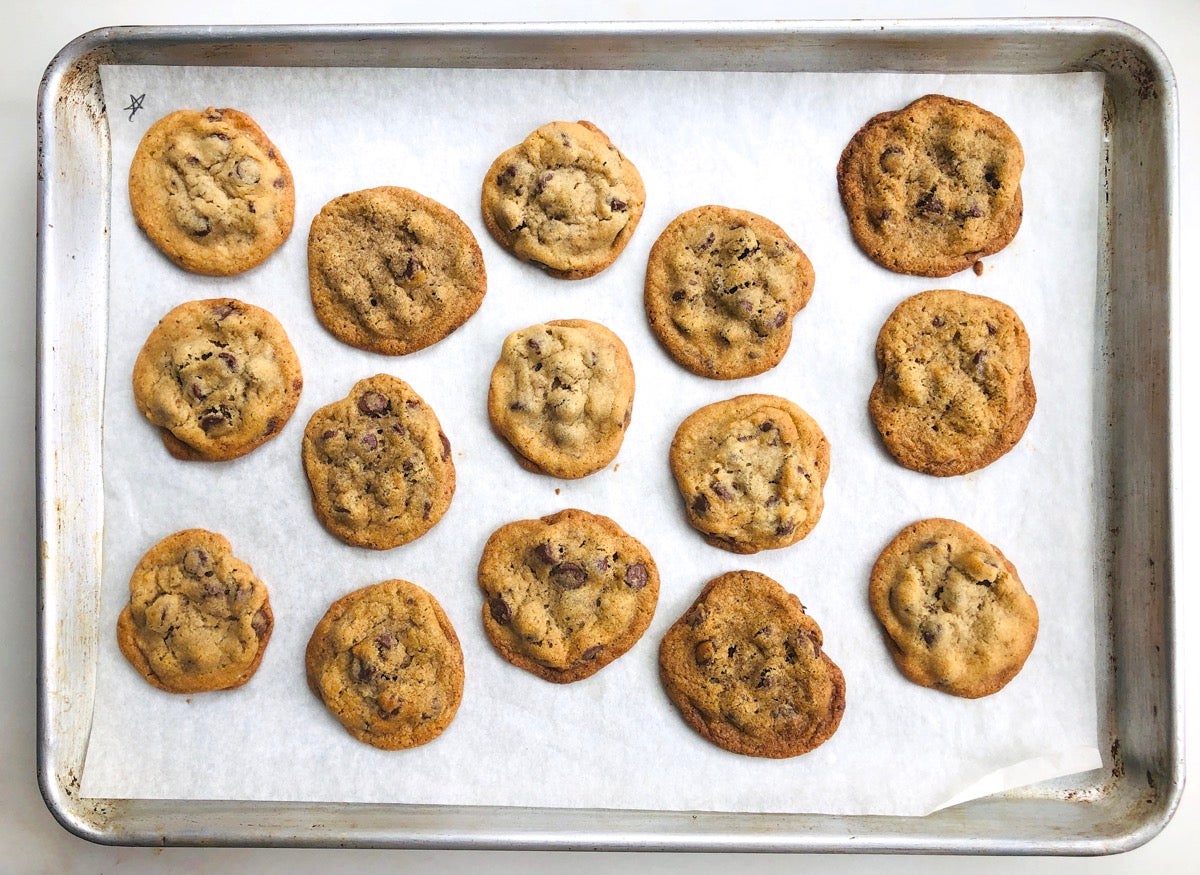
Want to read more about rye flour and how to use it? See our blog posts: Sourdough Rye Dessert Focaccia, Types of rye flour, and Explore the flavors and textures of rye.